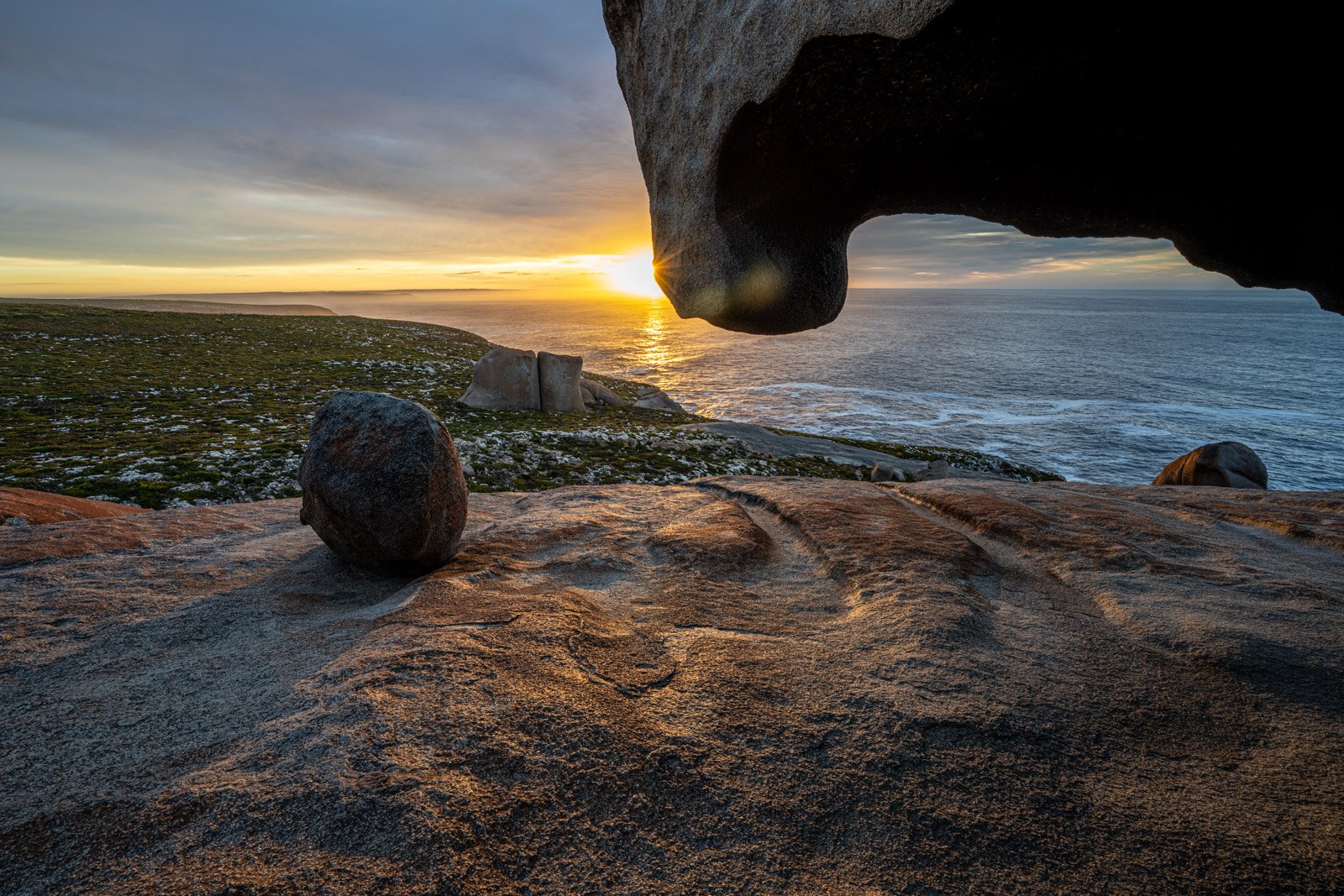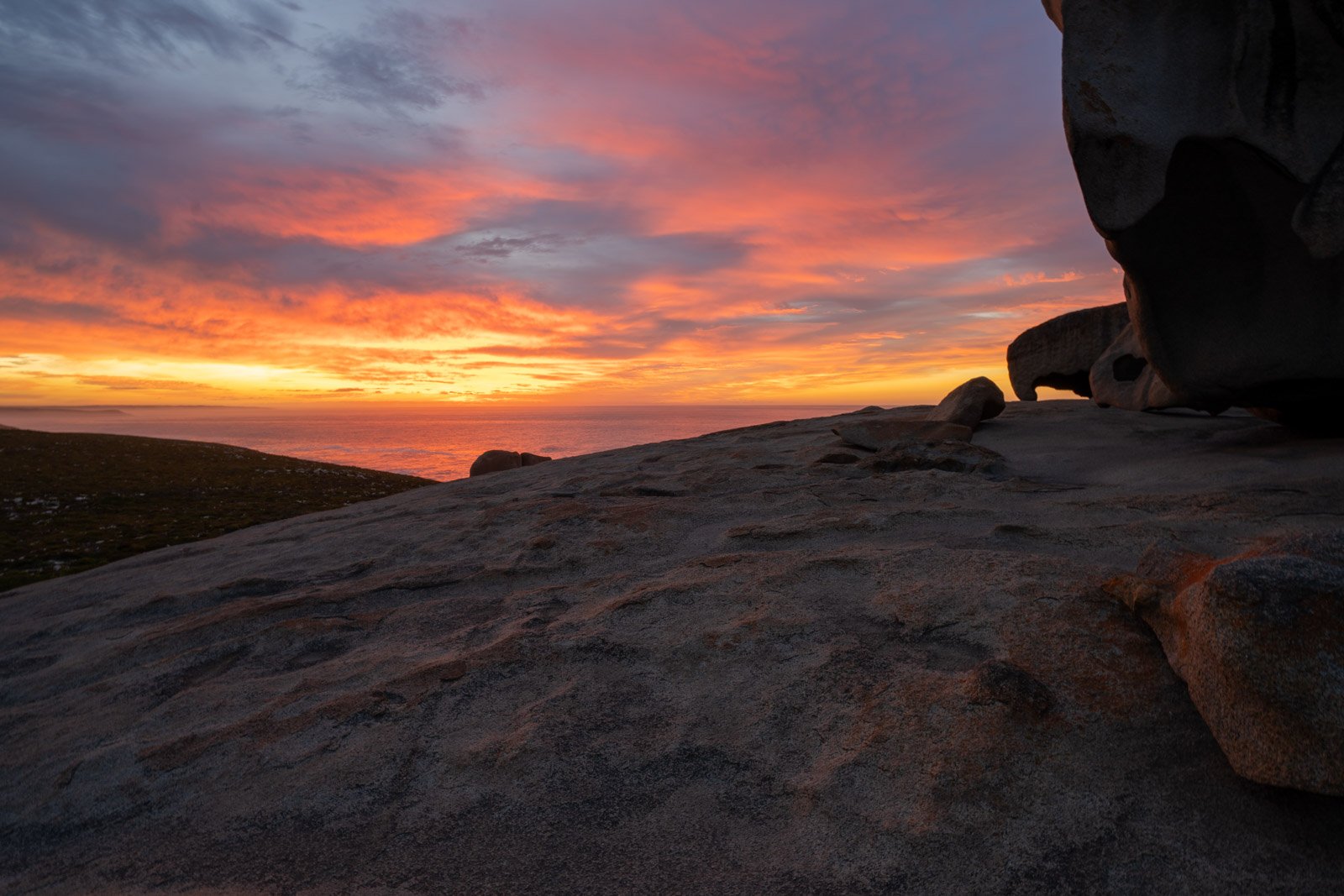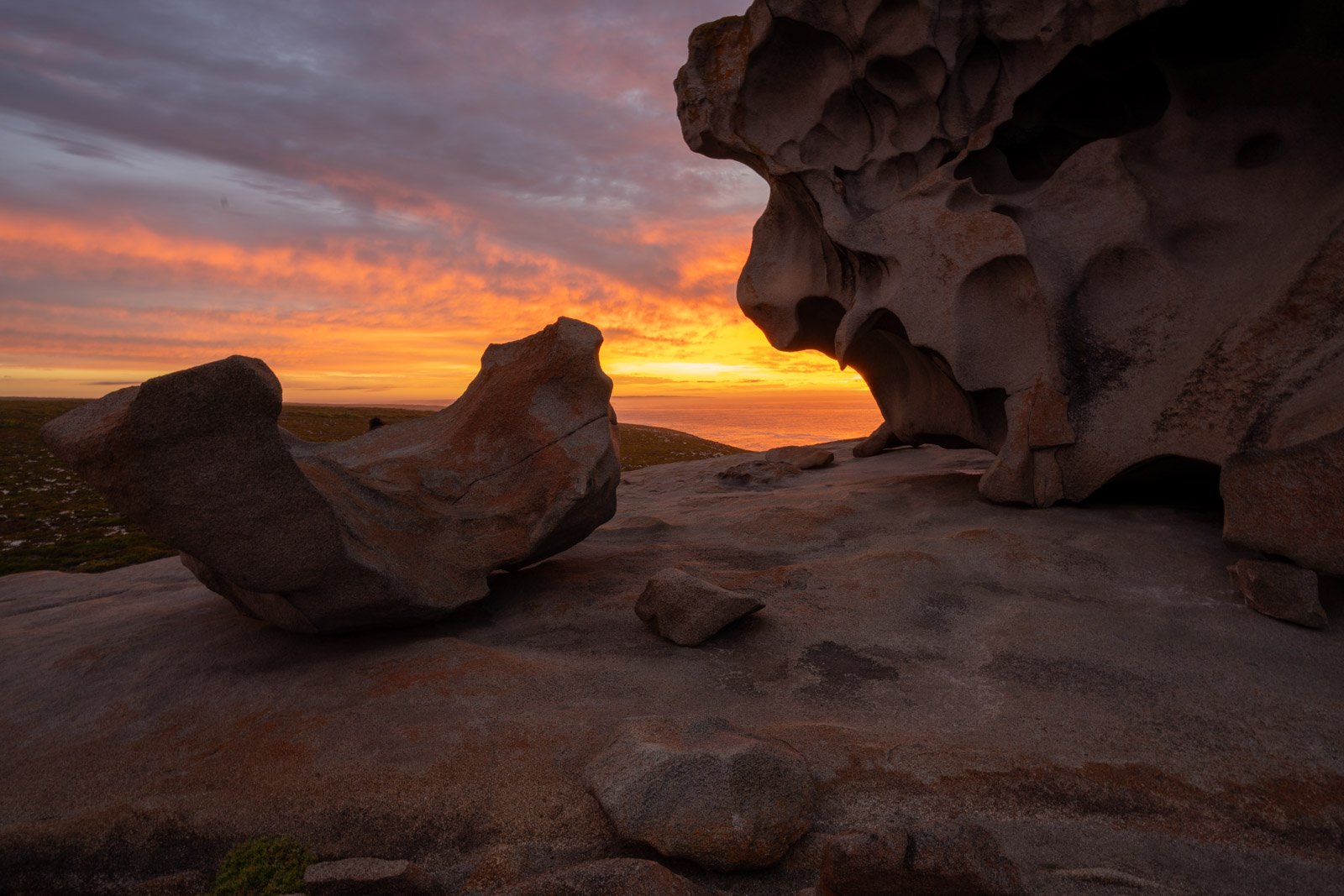Chasing the Golden Hour: Essential gear for capturing stunning sunsets and sunrises
Sunsets and sunrises offer photographers a magical time to capture breathtaking landscapes bathed in warm hues. But with ever-changing light and potentially challenging conditions, having the right gear can make all the difference. Here’s a breakdown of the essential photography gear I use when I chase those Golden Hour moments.
Remarkable rocks captured with Sony A7RV with Sony 16-35mm lens
Camera
While any camera can capture a sunrise or sunset, a DSLR or mirrorless camera offers greater control over settings and image quality. Look for a camera with a good low-light performance, measured by megapixels and sensor size. Higher megapixels generally translate to better image detail, and a larger sensor captures more light, crucial for those pre-dawn or post-dusk hours. A camera that allows for either Manual Mode or Aperture Priority is a good idea too. I personally love the current Sony A7RV.
Format Hitech ND Graduated Filter and adaptor on Sony A7RV
Lens
A wide-angle lens is your best friend for capturing expansive landscapes. Ideally, aim for a focal length between 16mm and 35mm on a full-frame camera (or the equivalent on APS-C or other sensor sizes). This allows you to include the vastness of the sky and surrounding scenery. Don’t forget to consider a fast lens (f/2.8 or wider) for capturing sharp images in low-light conditions. If you don’t have a wide-angle something like a 24-70mm will also work quite well. Something like the Sony 16-35mm wide angle or even the Tamron 28-75mm works a treat too.
Cape de Couedic Lighthouse with camera on Peak Design Travel Tripod
Tripod
A sturdy tripod is essential for capturing sharp photos during sunrise and sunset when shutter speeds tend to be slower due to lower light levels. Even the slightest camera shake can blur your images, ruining the magic of the moment. Consider a lightweight travel tripod if portability is a concern. Something like the Peak Design Travel Tripod is my go-to these days.
Using a remote shutter release minimizes camera shake even further. By remotely triggering the shutter, you eliminate any vibrations caused by pressing the shutter button on the camera body. This is particularly helpful when using longer shutter speeds for silky smooth water effects or capturing star trails during twilight. Alternatively, you can put your camera on a 2-second timer to avoid camera shake.
OKKO ND 6 filter on Tamron 28075mm lens
Neutral Density (ND) Filters
ND filters are optional but can be powerful tools for creative expression during sunrises and sunsets. These filters reduce the amount of light reaching the sensor, allowing you to use slower shutter speeds for creative effects, like blurring clouds or water movement, without overexposing your image. Graduated ND filters are particularly useful for balancing bright skies with darker foreground elements. If you’re after a standard screw-on type ND filter, the OKKO are fabulous. But they are not graduated.
Bonus gear
Circular Polarizer Filter: This filter helps reduce glare and reflections on water or glass surfaces, enhancing the vibrancy of colors in your sunrise or sunset scene.
Headlamp or flashlight: A headlamp or flashlight comes in handy for navigating in low-light conditions as you reach (or leave) your shooting location.
Extra batteries and memory cards: Pack extra batteries and memory cards to ensure you don’t miss a shot due to a dead battery or full card.
Remember, the best gear is the one you have with you. But having the right tools can elevate your sunrise and sunset photography experience, allowing you to capture the breathtaking beauty of these fleeting moments. So, grab your camera, pack your essentials and head out to chase the Golden Hour!










